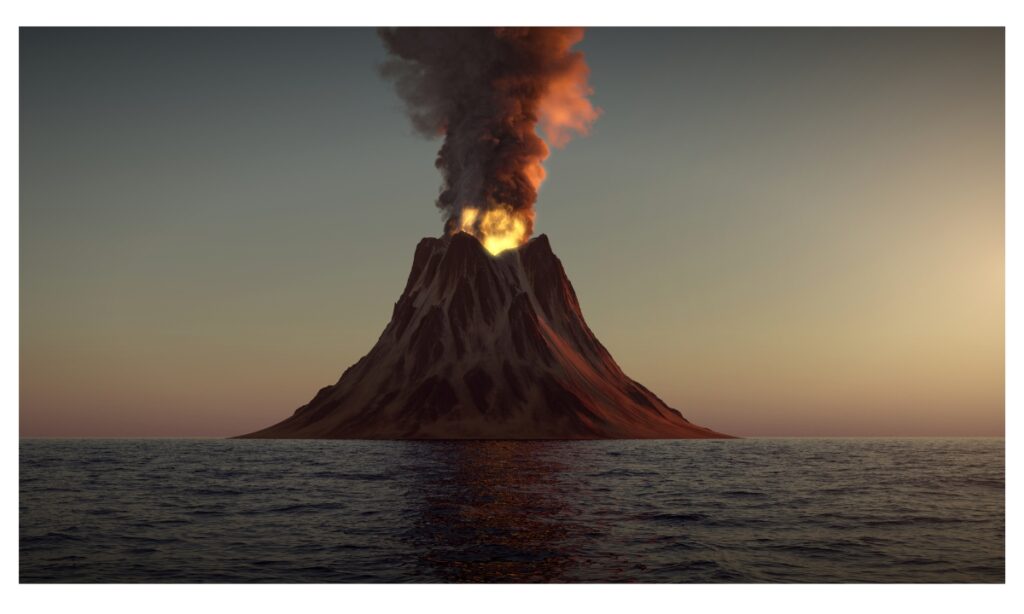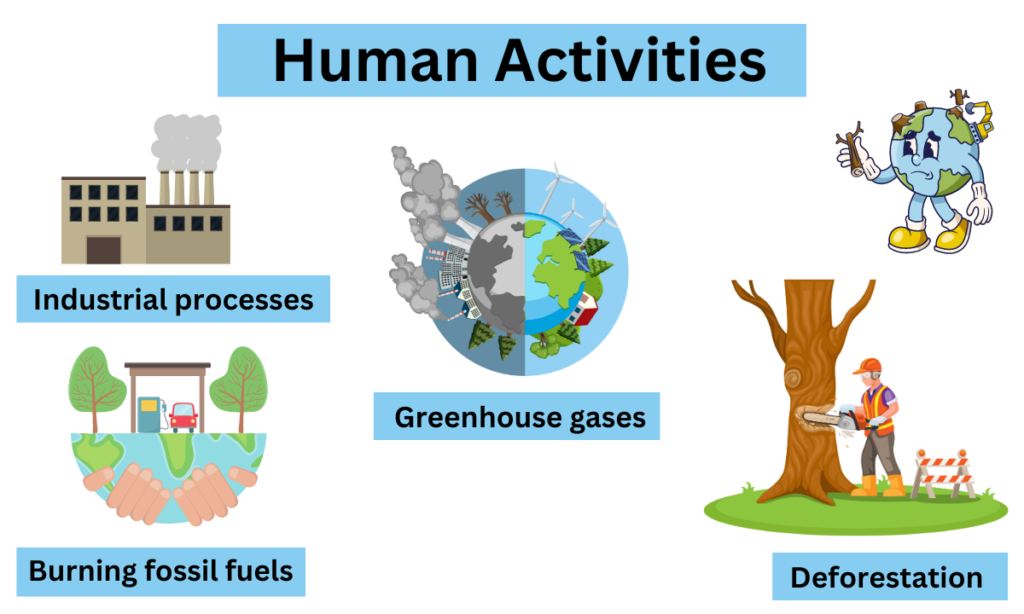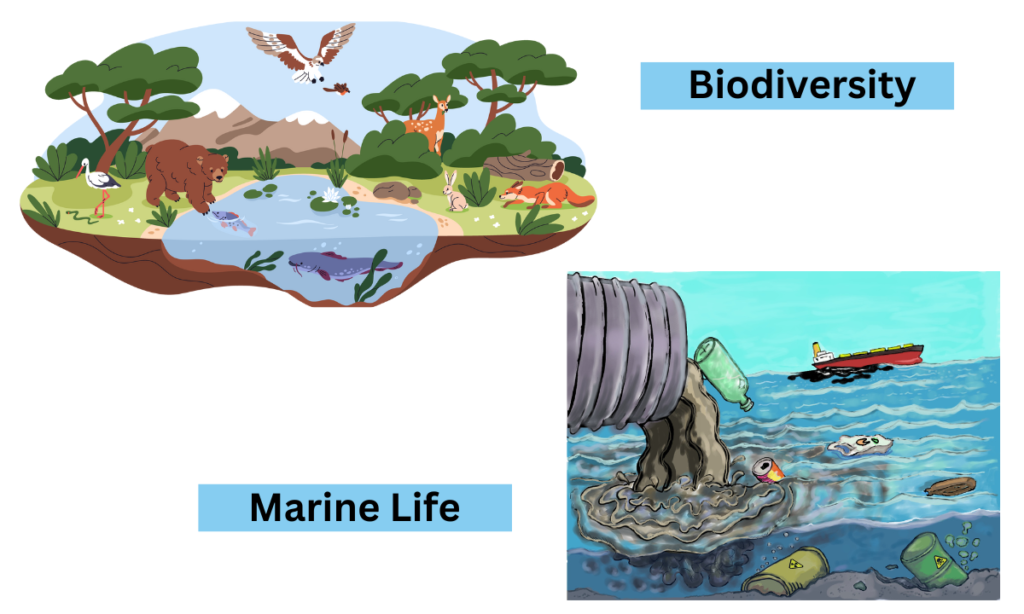Climate change refers to significant alterations in global temperatures and weather patterns over time. While climate has naturally varied throughout Earth’s history, current changes are largely driven by human activities. This phenomenon includes both global warming—an increase in Earth’s average surface temperature—and the broader effects on weather patterns, ecosystems, and sea levels.

History of Climate Change
Historically, Earth’s climate has undergone various changes, including ice ages and warm periods, often driven by natural factors such as volcanic activity and solar variations. However, since the Industrial Revolution, the burning of fossil fuels, deforestation, and industrial processes have drastically increased the concentration of greenhouse gases (GHGs) in the atmosphere, leading to accelerated climate change.
The Importance of Addressing Climate Change
Addressing climate change is crucial for the health and sustainability of our planet. Failure to mitigate and adapt to these changes could lead to severe environmental degradation, economic hardship, and social upheaval. It’s not just about preventing future risks but also about managing current impacts and safeguarding resources for future generations.
Causes of Climate Change

Natural Causes
- Volcanic Eruptions:- These can release large amounts of ash and gases into the atmosphere, temporarily cooling the Earth by reflecting solar radiation away.
- Solar Radiation Variations:- Changes in the sun’s energy output can influence global temperatures. However, these changes are relatively minor compared to human-induced factors.
Human Activities
- Greenhouse Gas Emissions:- Activities such as burning fossil fuels for energy, industrial processes, and transportation release significant amounts of CO2 and other greenhouse gases, trapping heat in the atmosphere.
- Deforestation:- Clearing forests for agriculture or development reduces the planet’s capacity to absorb CO2, further exacerbating global warming.

Impacts of Climate Change
- Melting Ice Caps and Rising Sea Levels: The polar ice caps and glaciers are melting at unprecedented rates, contributing to rising sea levels that threaten coastal communities and ecosystems.
- Changes in Weather Patterns: Increased frequency and intensity of extreme weather events, such as hurricanes, droughts, and floods, disrupt ecosystems and human livelihoods.
- Agriculture and Food Security: Changes in temperature and precipitation patterns affect crop yields, leading to food shortages and increased prices.
- Cost to Infrastructure: Extreme weather events can cause significant damage to infrastructure, leading to costly repairs and increased insurance premiums.
- Health Issues: Climate change can exacerbate health problems, including heat-related illnesses, respiratory conditions, and the spread of diseases.
- Migration and Displacement: Rising sea levels and extreme weather can force communities to relocate, leading to displacement and increased pressure on urban areas.
Climate Change and Ecosystems
Effects on Biodiversity
Climate change threatens biodiversity by altering habitats and ecosystems. Many species struggle to adapt to rapid changes, leading to shifts in distribution, behavior, and even extinction.

Impact on Marine Life
Rising ocean temperatures and acidification affect marine life, particularly coral reefs, which are highly sensitive to temperature changes. This impacts the entire marine food web, from plankton to larger predators.
Forests and Climate Change
Forests play a crucial role in absorbing CO2 and regulating the climate. However, deforestation and climate change-induced stressors, such as increased temperatures and changing precipitation patterns, threaten forest health and biodiversity.
Challenges in Addressing Climate Change
Political and Economic Barriers- Political and economic interests often hinder climate action, with resistance to change from industries reliant on fossil fuels and debates over the costs and benefits of mitigation measures.
Technological Limitations- While technology offers solutions, there are still challenges in scaling up clean energy technologies, improving energy efficiency, and developing new innovations.
Public Perception and Misinformation- Misinformation and lack of awareness about climate change can impede progress, making it crucial to provide accurate information and engage the public in meaningful ways.
Evidence of Climate Change
Global Temperature Rise
One of the most direct indicators of climate change is the rise in global temperatures. Records show that the Earth’s average temperature has increased by about 1.2°C since the late 19th century. This warming trend is largely attributed to the increased concentration of greenhouse gases in the atmosphere.
Heatwaves
Heatwaves have become more frequent and intense, posing significant risks to human health, agriculture, and ecosystems. They are a clear sign of the broader trend of increasing global temperatures.
: Melting Ice and Rising Seas
Glacial Retreat
Glaciers around the world are shrinking at an unprecedented rate due to rising temperatures. This not only contributes to sea level rise but also affects water supplies for millions of people who depend on glacial meltwater.
Sea Level Rise
Global sea levels have risen by about 20 centimeters since the start of the 20th century. This rise is primarily due to thermal expansion (water expands as it warms) and the melting of ice sheets and glaciers. Higher sea levels increase the risk of coastal flooding and erosion.
: Extreme Weather Events
Hurricanes
Climate change has intensified hurricanes, making them more powerful and capable of causing greater damage. Warmer sea surface temperatures provide more energy for storms, leading to more intense rainfall and stronger winds.
Floods and Droughts
Both floods and droughts are becoming more frequent and severe due to climate change. Changing precipitation patterns lead to prolonged droughts in some areas and increased flooding in others, disrupting water supplies, agriculture, and ecosystems.
1. What are the main greenhouse gases contributing to climate change?
The main greenhouse gases include carbon dioxide (CO2), methane (CH4), nitrous oxide (N2O), and fluorinated gases. CO2 is the most significant contributor due to its high concentration and long-lasting impact.
2.What are some effective ways to combat climate change?
Effective ways to combat climate change include transitioning to renewable energy, improving energy efficiency, protecting forests, and supporting policies that reduce emissions.
3. What is the difference between mitigation and adaptation?
Mitigation involves reducing or preventing the emission of greenhouse gases to slow climate change, while adaptation refers to making adjustments in practices, systems, and policies to minimize the impacts of climate change.
4. How can individuals contribute to combating climate change?
Individuals can reduce their carbon footprint by using energy-efficient appliances, reducing car travel, supporting renewable energy, recycling, and advocating for policies that address climate change.
5. How does climate change affect the average person?
Climate change affects people by increasing the frequency of extreme weather events, impacting food and water security, and posing health risks. It can also lead to economic disruptions and displacement.
6. Can climate change be reversed?
While we cannot reverse the changes that have already occurred, we can mitigate future climate change by reducing greenhouse gas emissions and adopting sustainable practices.
7. What are the main causes of climate change?
The primary causes of climate change include the burning of fossil fuels, deforestation, and certain agricultural practices, which increase the concentration of greenhouse gases in the atmosphere.
